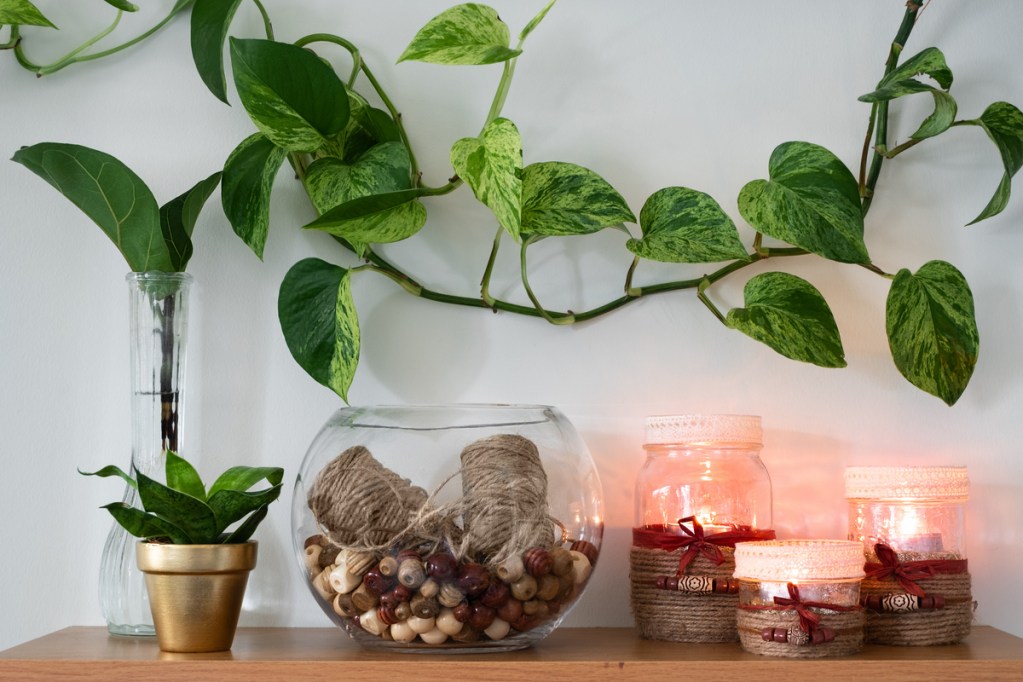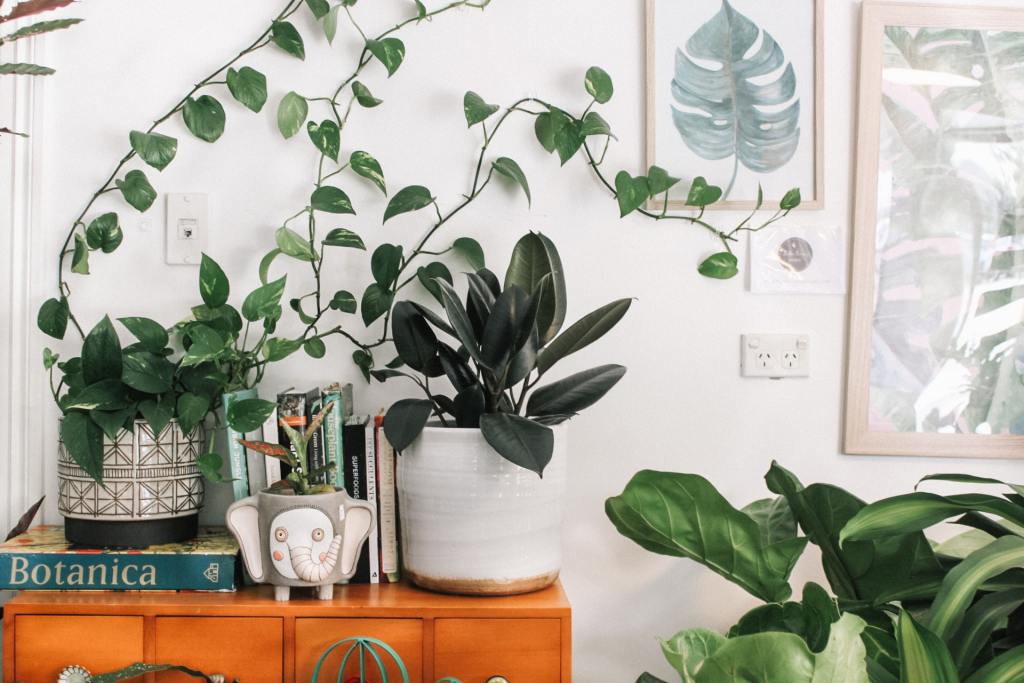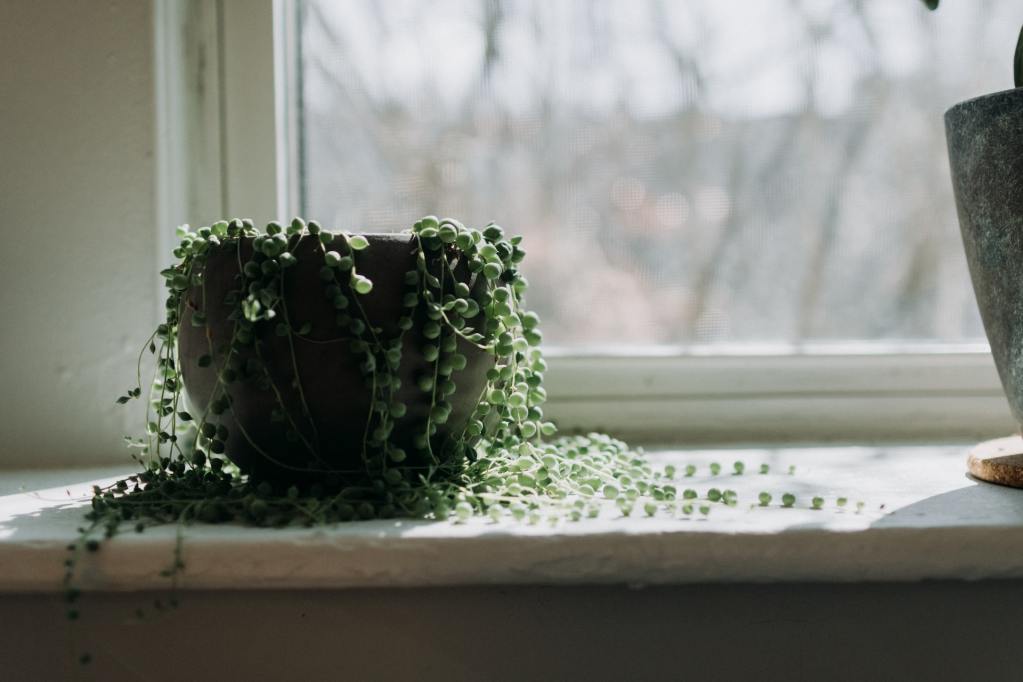
Vining plants add beauty and intrigue to many outdoor gardens. But did you know that they can also add personality and visual appeal to your home or apartment? While they may require a little more maintenance than your average houseplant, indoor climbing plants are definitely worth your time and effort. With the proper care and the right environment, you can grow a thriving indoor vine that beautifully accents your home — we’ll show you how to do it!

Growing and training an indoor vine
As you start to grow your indoor climbing plant, it’s important to train the vine to climb or trail properly. If you’d like your new vine to double as a piece of wall decor, draping it over wall hooks or a small trellis is a great way to start training the vine as it grows. You could also place the vine near a canvas or photograph hanging on the wall if you like the look of leaves looping over your wall art.
You’ll also need to help guide the climbing plant where to go, whether that’s winding them around the next part of the trellis or setting them on the next hook along the wall. Using a hanging basket is another low-maintenance option, in which the plant will just grow naturally downward and cascade. This method will result in more of a trailing effect than a climbing one, but both are good ways to display vine houseplants.

Our favorite indoor vines
Because some vine plants take over more easily than others, there are plants that can truly thrive in an indoor environment, even with less light. Any of these five types of vines will make a beautiful addition to your home.
String of pearls
The string of pearls plant is a variety of succulents that grows as a vine. It’s most often seen in hanging baskets because the beads of the plant cascade and flow beautifully over the edge, creating a lovely visual effect. Because this vine is technically a succulent, the string of pearls doesn’t need a lot of maintenance. That said, it doesn’t tolerate the cold well, so it may not be ideal for those who live in cooler regions.
If your hanging basket doesn’t have an attached drip tray (some do!), you’ll want to put some rocks at the bottom to give excess water a place to go. However, this will require you to alter your watering method slightly. If you aren’t experienced with succulents, it’s best to skip the mess and find a hanging basket with a tray.
Watering: Prefers the soak and dry method. When the top inch or so of the soil is dry, soak the soil until the water starts to come out the bottom and into the tray.
Light: Prefers strong natural light but will burn if in direct sunlight. Placing your string of pearls plant near a south- or west-facing window is ideal.
String of hearts
The string of hearts gets its name from its (no surprise!) heart-shaped leaves. Because this one is more of a trailing vine than a climbing vine, it will look its best in a hanging basket or in a pot on a shelf where the stems have space to flow downward. The stems can grow anywhere from 6 to 13 feet long, and the hearts are spaced out along them to create a beautiful appearance.
Watering: Prefers the soak and dry watering method.
Light: Prefers heat and bright indirect light. Doesn’t tolerate direct sunlight.
Pothos
Pothos come in many varieties, ranging from solid green to variegated. This type of vining houseplant can be grown as a trailing or climbing plant, depending on the look you want and the space you have. If you have room to help the leaves climb along a wall, up a bookcase, or on a trellis, this plant is a great choice for adding a unique element.
Watering: Prefers drying out completely between waterings, so let the plant tell you when to water. When the vine starts to droop, it’s a good sign that the soil is dried out and needs a refresher.
Light: Can survive in any light, but doesn’t grow as fast in low light.
Ivies
When you think of ivy, you may imagine it climbing the sides of brick buildings. But ivy is also a vine plant that thrives indoors. It adapts to a variety of different environments and, similar to the pothos, thrives as both a hanging basket plant and an indoor climbing plant.
Ivies are hardy plants. They tolerate inconsistent watering well and can help you recreate an outdoor feel inside of your home. Since they’re so easy to care for, they’re perfect for new houseplant owners.
Watering: Prefers the top inch or two to dry out before you water it again.
Light: Prefers bright indirect light for prolific growth.
Trailing philodendrons
Trailing philodendrons are very similar to vining pothos, except their leaves are thinner and less waxy. In addition to the basic green heart-shaped philodendron, you can also check out neon green, coppery Micans, and dual-colored Brasil varieties for extra flair in your space.
Philodendrons are incredibly easy to care for and more or less share the same maintenance requirements as pothos. To encourage growth, keep an all-purpose indoor houseplant fertilizer handy to feed your plant throughout the spring and summer.
Watering: Prefers a good soak when the top half of your soil feels dry to the touch.
Light: Prefers bright indirect light for consistent growth.

Prevent a takeover
As your indoor climbing plants grow, prune and pinch them to help encourage branching and fullness. Pinching (which is a method of pruning) involves removing growth as close to the leaf nodes as you can without damaging surrounding leaves. The plant will begin to grow new stems below the cut, which will result in a fuller-looking vine. Without routine pinching or pruning, you may find your vines becoming a bit leggy.
Keep in mind that the plants in your hanging baskets will need to be pruned, too! You may not be trying to keep them from taking over your whole room, but pruning and pinching will help them look their best.
Introducing vining houseplants into your home is a beautiful, natural way to spruce up your space, and it requires little more than regular care and some training to make a big impact in your home. If you’re thinking about starting an indoor plant collection or feel like your walls are just a bit too bare, give vine-growing a try!


